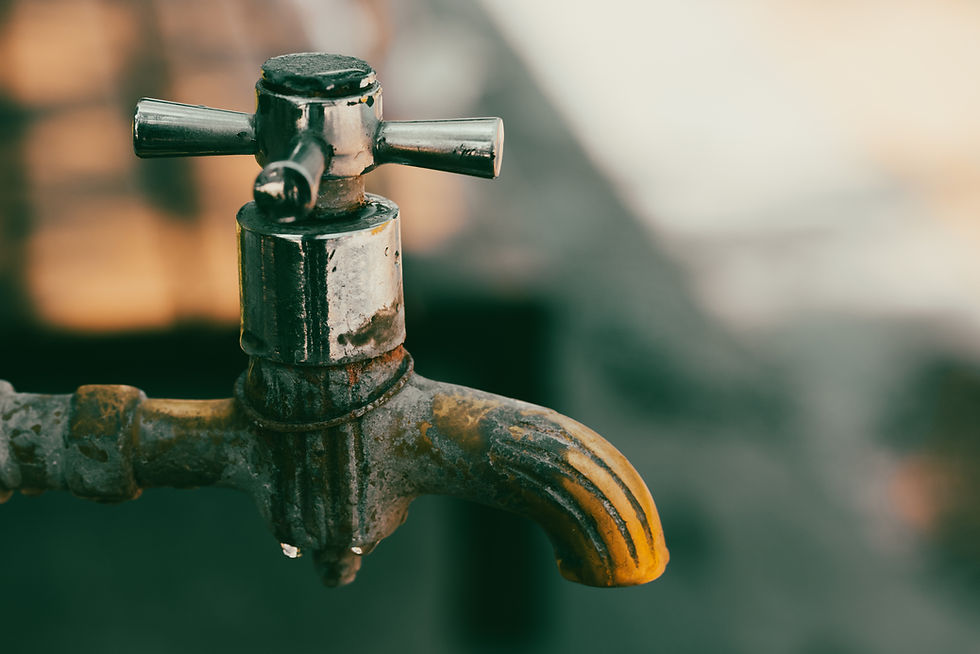Ivy Steinberg-McElroy
Global water issues are often a topic of discussion, but the United States has a water crisis of its own. From Flint, Michigan to Jackson, Mississippi, more than 2 million people in the United States lack access to safe drinking water and sanitation¹. This disproportionately impacts Indigenous communities- Native American households are 19 times more likely than white households to lack indoor plumbing¹ and an estimated one in 10 Indigenous Americans lack access to safe tap water or basic sanitation². The distinction is even greater for the Navajo Nation, of which 40% of its members do not have running water in their homes². Race, not housing location or income, is the factor most strongly associated with access to complete plumbing- throughout the country, 0.3% of white households lack complete plumbing, compared to 0.5% of African-American and Latinx households and a whopping 5.8% of Native American households¹.
Colonization of Native lands and the failure of the federal government to adequately fund and address the wellbeing of these communities over the past 200 years has caused Indigenous Americans to have lower health, education, and employment outcomes than the rest of the country³. This disparity was exacerbated by the COVID-19 pandemic, as frequent handwashing is a way to prevent transmission of COVID-19 and there is association between lack of indoor plumbing and COVID-19 infection rates on reservations⁴. Native nations such as the Navajo Nation also experience diabetes at two to four times the rates of whites because sugary drinks are often more accessible than water¹.

Image from Unsplash
In 1908, the U.S. Supreme Court case Winters v. United States established tribal water rights and ruled that Congress must set aside enough water for the people to be self-sufficient⁵. There is debate whether this applies to groundwater, which has been polluted by fracking done on Native lands⁶ as well as spills from pipelines. This is an issue as many Natives access their drinking water from wells due to lack of piped water services. In addition to lack of piped water services, Native American communities deal with water issues such as uranium¹ and arsenic contamination and inadequate or deteriorating water infrastructure⁷. Among the most impacted by these issues are 30 tribes within the Colorado River Basin, located across California, Nevada, Arizona, New Mexico, Utah, and Colorado, which is currently experiencing drought as well.
A study done by DigDeep found that closing the water gap in the United States would result in nearly $200 billion in economic benefits and that these economic benefits outweigh the costs by nearly 5 to 1⁸. Progress is being made, as just a few days ago the Biden administration announced that 15 Native American tribes will get a total of $580 million in federal money this year for water rights settlements⁹. The U.S. can follow Canada’s lead in reparations as in 2021, The Canada Federal Court approved a multi-billion-dollar legal settlement that requires the government to clean up contaminated drinking water on Indigenous reserves and to compensate First Nations for the lack of clean water they have experienced for decades, with tens of thousands of people living under water boil orders for over a year¹⁰. This settlement is a great starting point for taking responsibility and holding themselves accountable for the damage that the Canadian government has inflicted on Indigenous people for centuries. However, there needs to be more just reparations for the First Nations community and Indigenous American communities to be truly restored. Overall, the United States needs to compensate Native Americans for the atrocities committed to them by the U.S. government over hundreds of years and create a coordinated effort to address Water, Sanitation and Hygiene (WASH) issues in a way that brings Indigenous people to the forefront of the discussion.
1 DIGDEEP, US Water Alliance. (2019). Close the water gap. DIGDEEP. https://www.digdeep.org/close-the-water-gap
2 Lakhani, N. (2021, April 28). Tribes without clean water demand an end to decades of US government neglect. The Guardian. https://www.theguardian.com/us-news/2021/apr/28/indigenous-americans-drinking-water-navajo-nation
3 Broken Promises: Continuing Federal Funding Shortfall for Native Americans. United States Commission on Civil Rights. (2018). https://www.usccr.gov/files/pubs/2018/12-20-Broken-Promises.pdf
4 Rodriguez-Lonebear, D., Barceló, N. E., Akee, R., & Carroll, S. R. (2020). American Indian Reservations and COVID-19: Correlates of Early Infection Rates in the Pandemic. Journal of public health management and practice : JPHMP, 26(4), 371–377. https://doi.org/10.1097/PHH.0000000000001206
5 Harris, C. (2017). Emerging Environmental Issues in Native Communities | Environmental Law Institute. https://www.eli.org/vibrant-environment-blog/emerging-environmental-issues-native-communities
6 Vanderpool, T. (2019). A Fracking Boom Ransacks the Four Corners. NRDC. https://www.nrdc.org/stories/fracking-boom-ransacks-four-corners
7 Tanana, H., Garcia, J., Olaya, A., Colwyn, C., Larsen, H., Williams, R., & King, J. (2021).
Universal Access to Clean Water for Tribes in the Colorado River Basin: Executive Summary. https://tribalcleanwater.org/wp-content/uploads/2022/02/Executive-summary-new.pdf
8 Draining: The Economic Impact of America's Hidden Water Crisis. DIGDEEP. (2022). https://www.digdeep.org/draining
9 Naishadham, S. (2023). 15 Native American tribes to receive $580 million in federal money for water rights settlement. PBS NewsHour. https://www.pbs.org/newshour/politics/15-native-american-tribes-to-receive-580-million-in-federal-money-for-water-rights-settlement
10 Isai, V. (2021). Canada and Indigenous People Settle Over Drinking Water - The New York Times. https://www.nytimes.com/2021/12/23/world/canada/indigenous-water-lawsuit.html
Disclaimer: All information, content and materials on this blog are for general information purposes only. Any opinion expressed by the author is not necessarily the opinion of Penn Club H2O or University of Pennsylvania.

Comentários